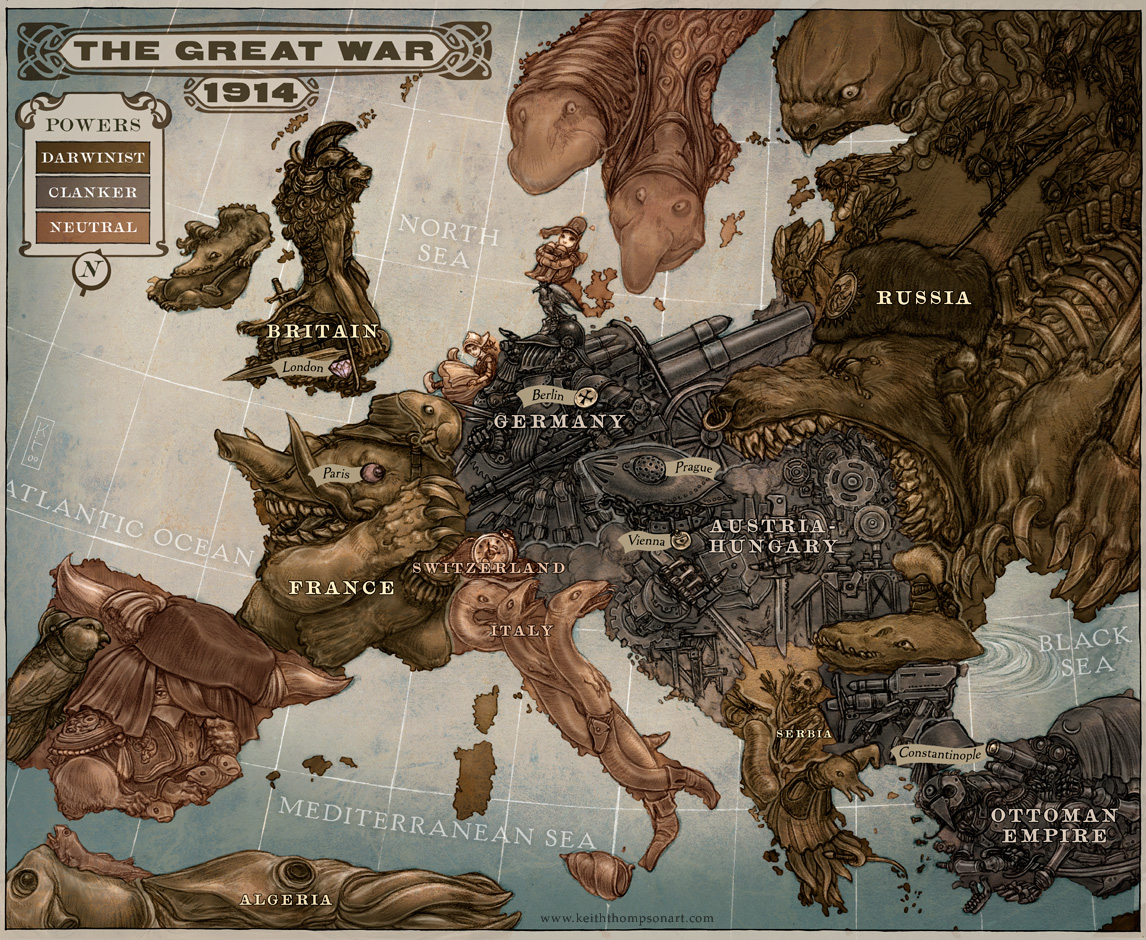Graceheart the Leopard
Resident Amur leopard
- Joined
- Sep 24, 2007
- Messages
- 3,476
This again.



It was Friday so we did it fancy dress (the Scots went as ghosts though)Didn't realize Britain decided to storm the western front dressed as William Wallace.



Please say the british conquered the irish again
Uh, actually...Didn't realize Britain decided to storm the western front dressed as William Wallace.

Uh, actually...

To stop all this talk about the First world war (although Illiniois amazed me too) I have an alternate map (It haz a date)

Basically, my vision of the world in 2200 AD.
AMERICA
Spoiler :Purple in North America: North American Confederation. A Union of Mexico, the USA, Canada and Alaska (Alaska was a state from 2050 AD to 2150 AD, when it was conquered by the NAC). Mexico joined a while ago, in 2190 AD.
Red in North America: Carib-Maya Union. Consisting of Cuba, Jamaica and everything in Central America that isn't Mexico, it's what happened when Natives took over in 2100. Today it's a most respectable republic, except for the Carribeans who think it should be ruled by Creoles (like themselves).
Blue in the Carribean: Carribea. Haiti went on a conquering spree, and got the islands off Florida for free (one less place to worry about). They are a Creole kingdom which hates the Native neighbors.
Light Green: Colombivenezuecuaperu: Nowadays the longest single country name, a Dictatorship ruled from Cuzco. No one knows why they'd pick Cuzco, but still.
Green: Brazil. Has been the little one for so long, now it wants to control South America. It's latest acquisition? Uruguay, in 2090 AD.
Blue: South America. Just Peru and Argentina, an anarchy because no one ever agrees on the government. Most likely to fall apart by... Never actually. Brazil and CVEP (Colombivenezu... you know) care for the governmental affairs.
AFRICA:
Spoiler :Britain has a hold here.
more later.

Uh, actually...


Spoiler :On the 9th of July 2011, a flotilla of 12 Chinese warships encountered 10 Vietnamese armoured vessels in the South China Sea about 53 Kilometres away from the Paracel Islands. Admiral Zhong Shengjun ordered the Vietnamese ships to leave "Chinese territorial waters" or risk being fired upon. The Vietnamese ships refused to withdraw and after 20mins, Admiral Zhong ordered the first shot to be fired onto the Vietnamese ships. After about an hour's worth of exchange in hostilities, the Vietnamese ships withdrew. 51 Vietnamese soldiers died to 240 Chinese soldiers and 2 Chinese ships were sunk to zero Vietnamese ships. Both sides claimed victory.
Both the Chinese and Vietnamese governments attempted to diplomatically resolve the issue in Bangkok but after China's refusal to submit the Paracel Island case to the International Court and issue an apology for starting the battle, the Vietnamese delegation stormed out threatening hostilities. The Paracel War began.
On the 11th of July, Chinese troops crossed into Vietnamese territory only to be repulsed with heavy losses. The Vietnamese counterattacked and succesfully held positions on the Chinese side of the border.
On the 14th of July, a combined delegation of Japan, South Korea, Malaysia, Brunei and the Philippines presented to the Chinese Foreign office an ultimatum to cease the disruption of "peace in Eastern Asia" and submit the case to International hearing or face severe repercussions. The Chinese rejected the ultimatum and the next day, on the 15th, the combined delegation, declared war on China in the defense of Vietnam. The Republic of China joined the coalition 5 hours later.
The Shanghai stock market crashed the next day, beginning the 'Great Chinese Depression'.
1st August 2011, 134 kilometres off the coast of Taiwan, the combined fleets of the Coalition of some 34 warships faced the PL Navy of 48 warships. However, due to the air superiority from ROC and Japan and the ability of the Coalition Airplanes to refuel in Taiwan, China suffered a decisive defeat of 24 sunken ships including the maiden voyage of the the Chinese aircraft carrier, the Varyag which was the first ship sunk. 604 Chinese sailors died another 210 captured. On the coalition side, only 2 ships sunk with a loss of 163 seamen.
The destruction of the naval fleet led to wide-spread unrest in China demanding the end to hostilities. The combination of the crushing defeat and the economic downturn due to the crash of the Shanghai market led to large protest and riots in major Chinese Cities, especially in the south.
On the 19th of July, the garrison in Hong Kong was overpowered by the local Hong Kongers and the Hong Konger front, an independence based group, blew up the Shenzen-Hong Kong Bridge and declared Hong Kong and Macau "The Free Republic of Hong Kong and Macau"
On the same day, the Chinese government sent tanks to quell the uprisings in Shanghai and begin to fire on protestors. The protestors responded by burning government buildings. Garrisons were overrun and the people began forming resistance units from the guns in garrisons.
By August 1st, a New government based in Guangzhou declared Independence from Beijing, the Republic of South China. The Republic of China officially changed it's name to the Republic of Taiwan.
Meanwhile, the Tibetians overthrew and chased the Chinese out of Lhasa, the Dala Lama returns to the triumphant applause of Tibetians. In Turkestan, a systematic explusion of the Chinese people began as refugees flee to Gansu.
RSC forces began moving North. This is the frontline on the 1st of January 2012


aronnax said:But I wanna a large scale revolt in China and foreign invasion!
Accepting that this scenario is ASB ridiculous, why would Britain annex Algeria, instead of South Africa or Nigeria or Kenya (etc)? And why wouldn't France get back there before the Brits?
